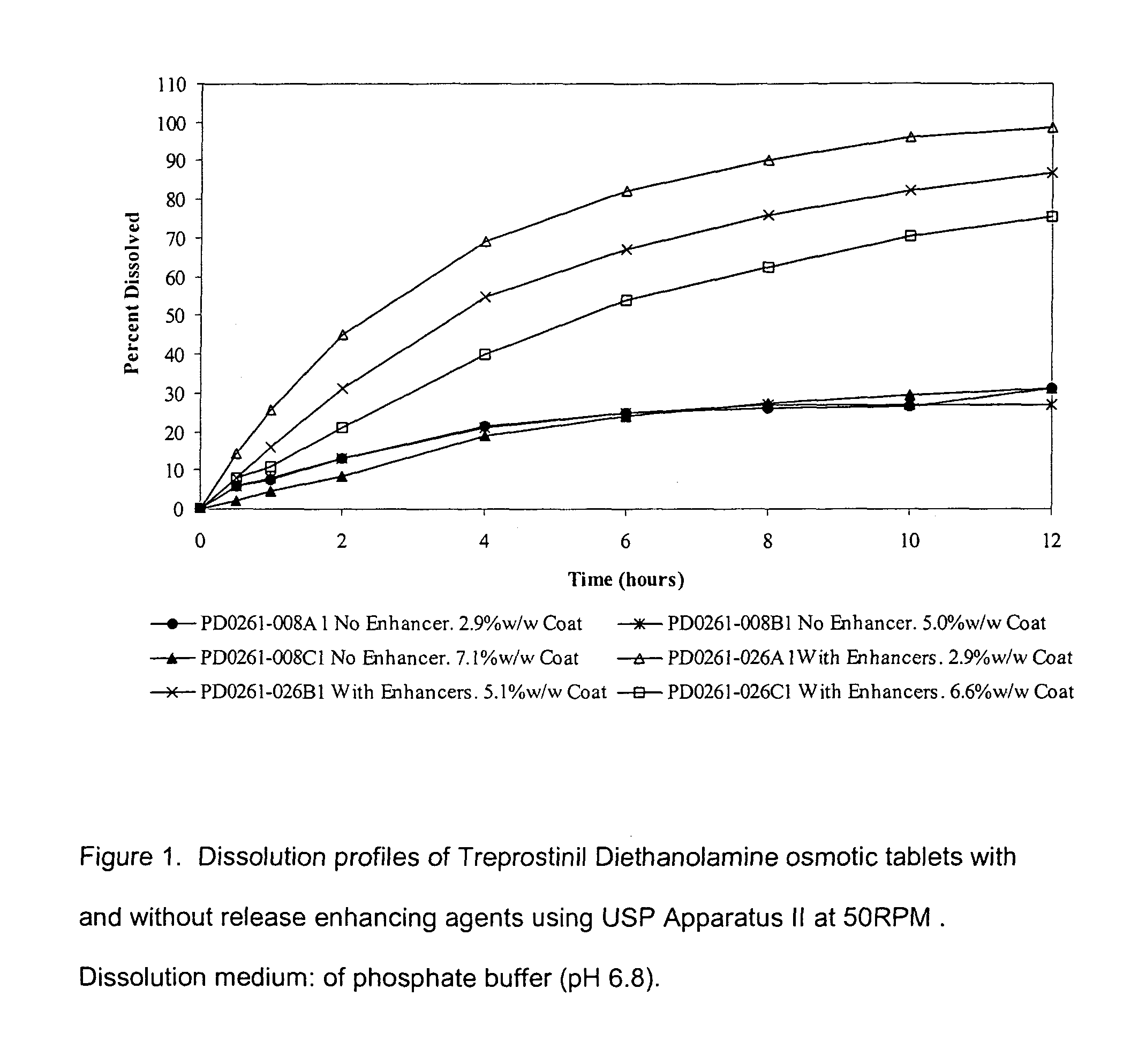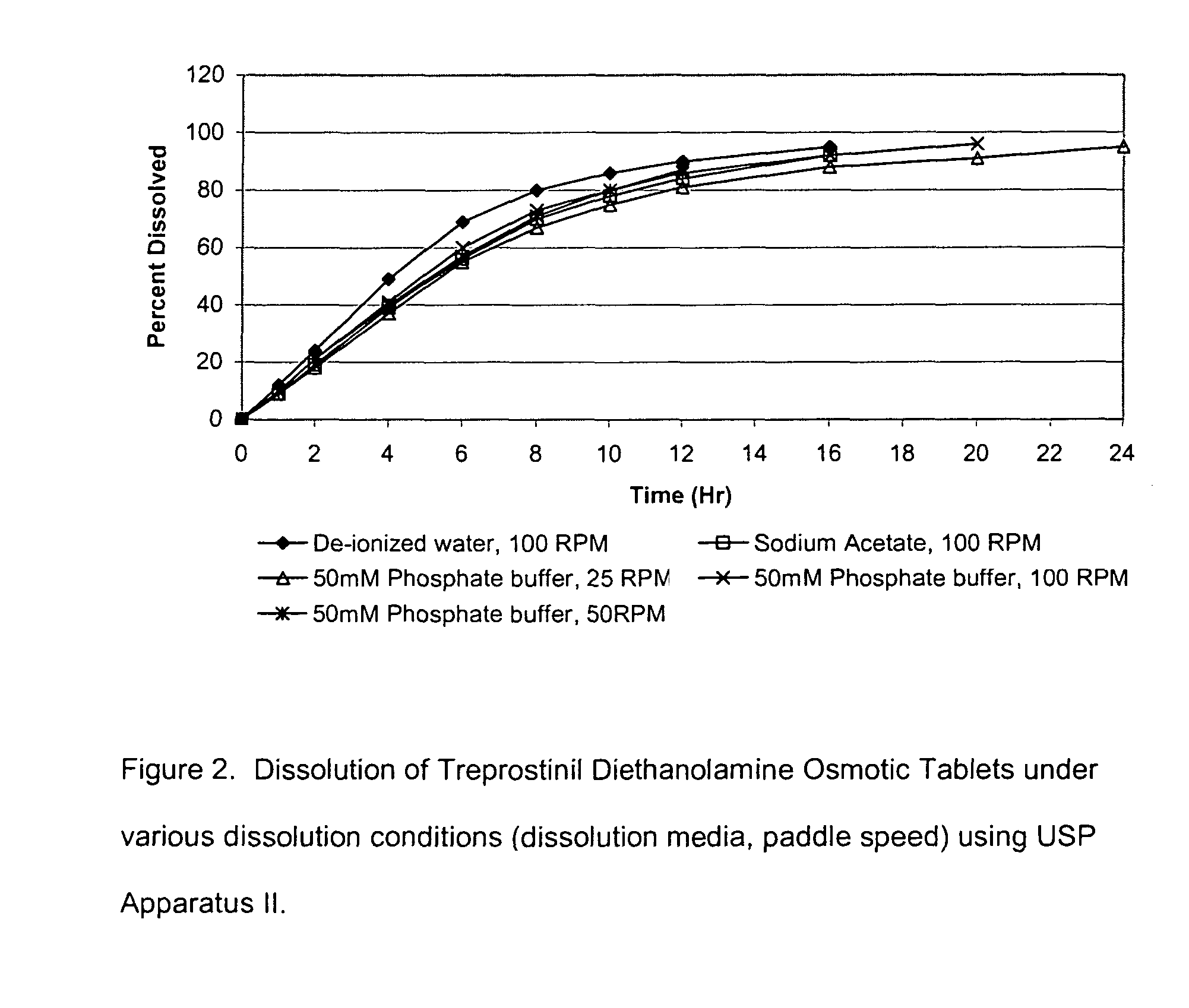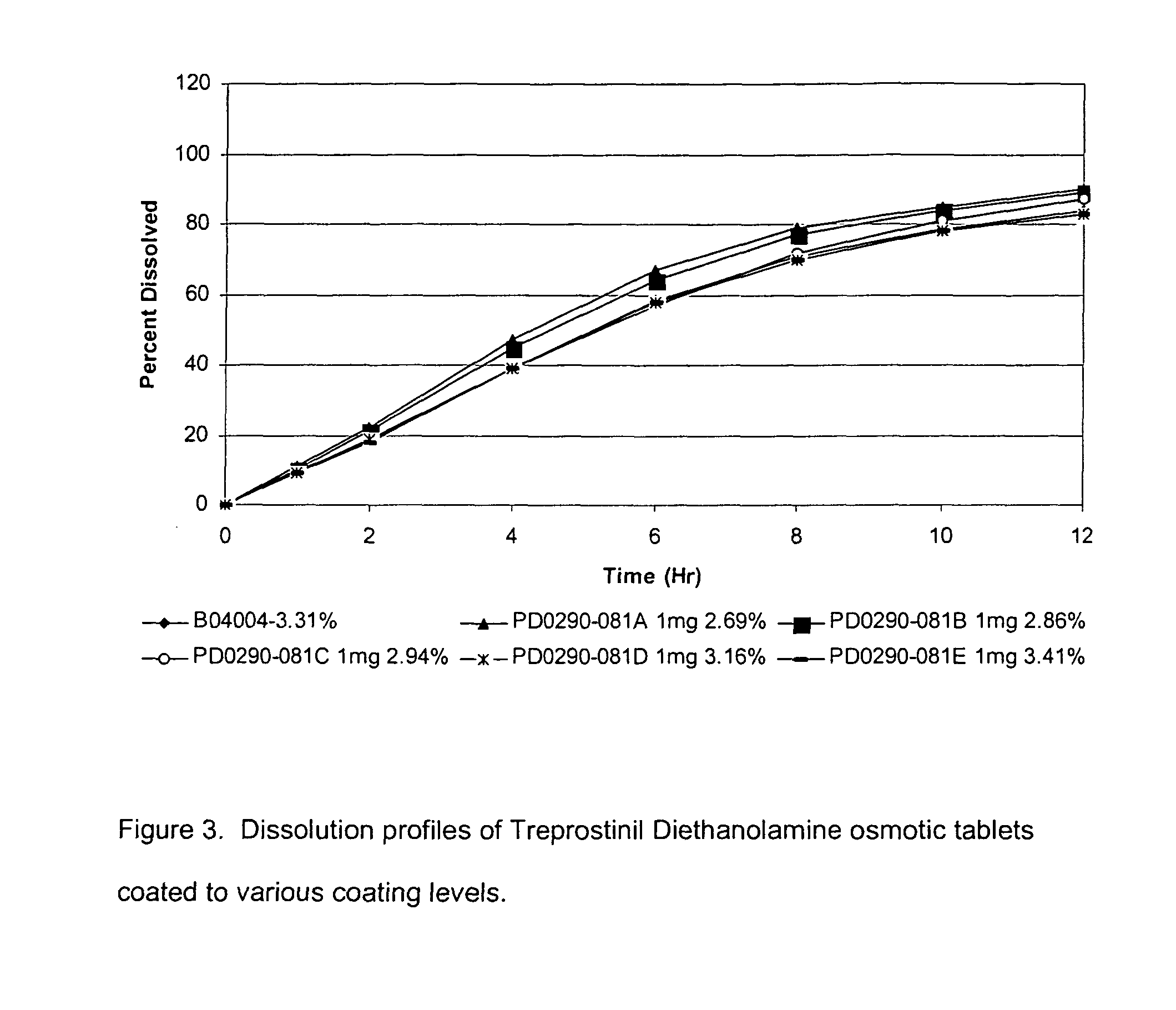Osmotic drug delivery system
a technology of osmotic pump and osmotic liquid, which is applied in the direction of drug composition, elcosanoid active ingredients, extracellular fluid disorder, etc., can solve the problems of limited bioavailability, incomplete release, and inability to function properly of the elementary osmotic pump system, so as to improve patient compliance, reduce side effects, and high water solubility
- Summary
- Abstract
- Description
- Claims
- Application Information
AI Technical Summary
Benefits of technology
Problems solved by technology
Method used
Image
Examples
example 1
Granulation of Treprostinil Osmotic Formulation Containing Sodium Lauryl Sulfate and Meglumine as Release Enhancing Agents
[0041]Table 1 provides composition of the Treprostinil osmotic tablet cores made with and without release enhancing agent:
[0042]
TABLE 1Composition of Treprostinil osmotic granulationIngredientsNo ReleaseWith release enhancersTreprostinil diethanolamine0.635% 0.65%Xylitol41.0%41.00%Maltrin M150 (wet)1.60%1.40%Maltrin M150 (dry)53.0%48.20%Sodium Phosphate 3%—Sodium Lauryl Sulfate—5.00%Meglumine—3.00%
[0043]All ingredients were screened through an 18-mesh sieve prior to granulation. Granules were manufactured by top spray granulation in Glatt's fluid bed granulator (GPCG-1 or GPCG-15 (Glatt® Air Techniques Inc., Ramsey, N.J.). Two spray solutions were prepared. One solution contained Maltrin M150 (used as a binder), and the drug, treprostinil. The second solution contained Maltrin M150 only. Prescreened ingredients were charged in to the fluid bed granulator. Spray ...
example 2
Tableting of Granules from Example 1
[0045]Screened granules from Example 1 were blended with magnesium stearate in a V-blender for 3-5 minutes. The blend was tableted on a Rotary tablet press using a 5 / 16″ round standard concave tooling (punches and dies). Tablet weight, hardness, and thickness were monitored throughout the compression run. Tablets were also analyzed for an assay and content uniformity.
Table 3 provides the composition of treprostinil core tablets:
[0046]
TABLE 3Composition of Treprostinil osmotic tabletsNo ReleaseIngredientsenhancerRelease enhancer(s)Treprostinil diethanolamine0.635% 0.65%Xylitol41.0%41.00% Maltrin M150 (wet)1.60%1.40%Maltrin M150 (dry)53.0%48.20% Na Phosphate 3%—Sodium Lauryl Sulfate—5.00%Magnesium stearate0.75%0.75%
example 3
Coating of Tablets from Example 2
[0047]Core tablets from Example 1 were coated with a coating system containing cellulose acetate as a polymer and Poly(ethylene glycol) 3350 (PEG3350) as a plasticizer. Coating was performed in LDCS-III pan coater (Vector Corporation, Marion, Iowa). The coating solution was sprayed on the tablets in a rotating perforated pan until the desired coating level was achieved.
PUM
| Property | Measurement | Unit |
|---|---|---|
| concentration | aaaaa | aaaaa |
| concentration | aaaaa | aaaaa |
| solubility | aaaaa | aaaaa |
Abstract
Description
Claims
Application Information
 Login to View More
Login to View More - R&D
- Intellectual Property
- Life Sciences
- Materials
- Tech Scout
- Unparalleled Data Quality
- Higher Quality Content
- 60% Fewer Hallucinations
Browse by: Latest US Patents, China's latest patents, Technical Efficacy Thesaurus, Application Domain, Technology Topic, Popular Technical Reports.
© 2025 PatSnap. All rights reserved.Legal|Privacy policy|Modern Slavery Act Transparency Statement|Sitemap|About US| Contact US: help@patsnap.com



